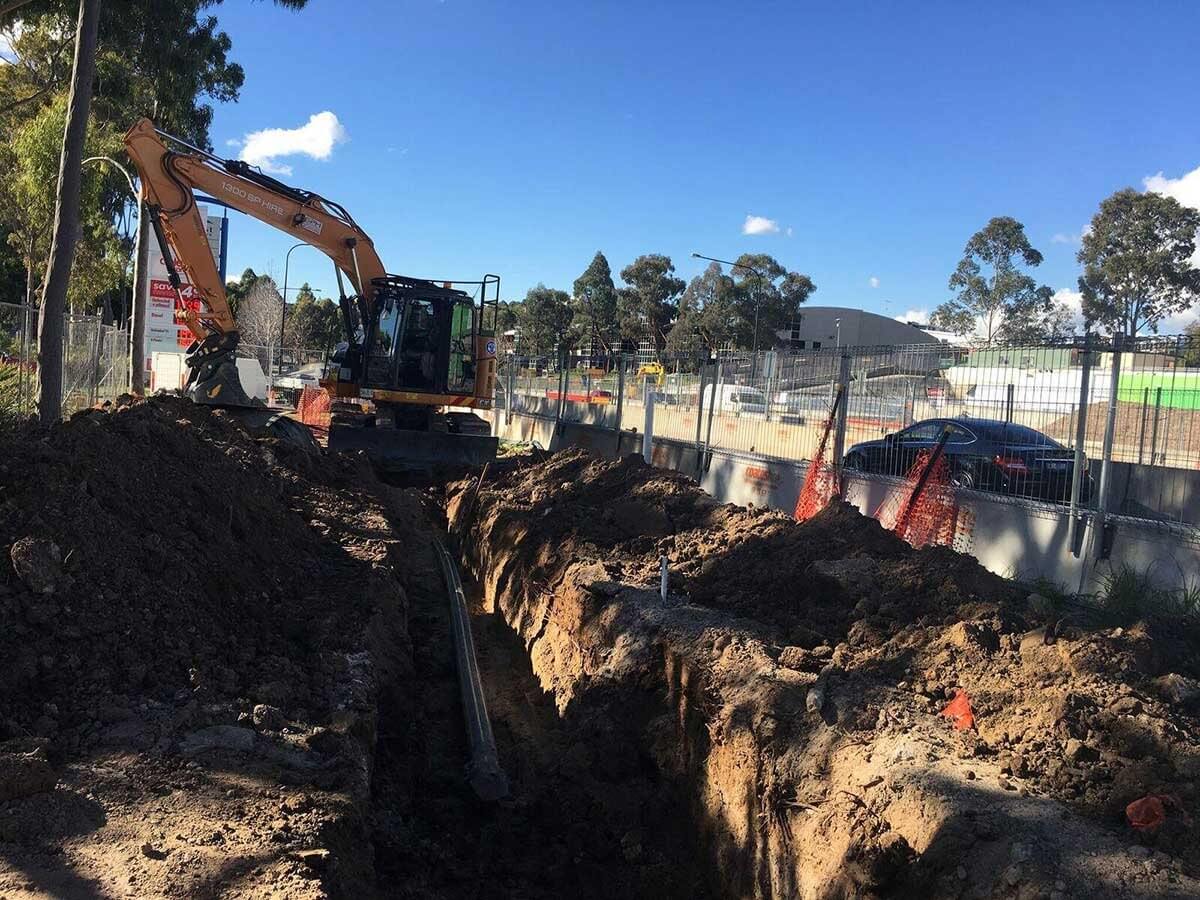When working in the construction industry, excavation and trenching can be some of the most dangerous operations carried out. Because excavation failures can happen so quickly, it’s important to ensure work carried out around an excavation site is safe for everyone involved. Unsafe practices may result in a potentially dangerous situation for both workers and people in the vicinity.
There are a number of factors to consider when assessing the workplace before excavating or trenching.
What is excavation work?
A project involving excavation usually means removing soil or rock from a site in order to form an open face, cavity or hole. The use of tools, machinery such as an excavator, or explosives are usually standard to the job. Because of the severity an excavation collapse or failure can have, there must be a person responsible for managing risks associated with the excavation, no matter how deep it is.
When working on higher-risk excavations that include trenches, shafts and tunnels, there will also be specific duties for these projects to ensure a safe project. To be considered a high-risk construction project, the work will be:
- Carried out in or near a trench or shaft, excavated deeper than 1.5 metres.
- Carried out in or near a tunnel1.
Who is responsible for health and safety measures?
The person who is conducting a business or undertaking in relation to excavating and trenching is the primary person with the duty to ensure workers and other people are not exposed to risks in the workplace. This can include owners, managers on the site, or those who are managing or controlling the excavation equipment.
Managers of the site should ensure everyone has access to appropriate resources to help implement the correct procedures that should be be taking place on the site. Monitoring and assessing the site and procedures regularly is also important to ensure any hazards that are identified are adequately managed.
Workers on the site should consider themselves responsible for their own actions and wellbeing, as well as the workers and contractors around them. Following procedures and asking others to stop work if there is a possible risk to the health and safety of workers is recommended until that risk is assessed and/or eliminated or fixed by a relevant manager. As with all work sites, the use and maintenance of Personal Protective Equipment (PPE) should be standard practice1.
How to manage risks associated with excavation work
Regulations created based on Work, Health & Safety legislation states that reasonable foreseeable hazards should be identified and eliminated as reasonable practical1. The process includes:
- Identifying the hazard
There are a wide range of hazards that could occur in excavation work. The risk management process can be a difficult one, due to the number of hazards that could pose a risk. Some examples include:
– Falls from various levels
– Falling objects
– Poor ventilation and the build up of hazardous chemicals
– Dislodgement of rock and soil
– Underground essential services including gas, water, telecommunications, sewerage, electricity, chemicals, fuels and other pipes and lines. - Assess the risks associated with the hazard
A risk assessment can help determine the danger of the hazard and what control measures will need to be put in place. A risk assessment can also help to:
– Determine which workers are at risk
– Determine what sources are causing a risk
– Check how effective current control measures are
There are a number of other factors to consider as well, such as local site conditions, the depth of the works being carried out and even, local weather conditions and the time the excavation will be open.
- Implement control measures
Once the assessment has determined the best control measure for the risk, it is time to implement it. All workers are to be informed of the control measures and staff are to be provided with the appropriate PPE, such as hard hats, hearing protection and high visibility vests. - Maintain and review the measures put in place
Once a control measure is put in place, it must be regularly assessed to make sure the measures are effective. It also gives the assessor a chance to review if any new risks or hazards are apparent and if any further reviews and assessments are required. If issues are still prevalent, going back through the steps of risk management is required and further control measures are put in place.
Trenching requirements
If a site is proposing to excavate a trench of a minimum of 1.5m deep, trenches will need to be supported by at least one of the following:
- Shoring by shielding
- Benching
- Battering
By utilising these measures, you can have the most effective control measures in place, depending on the work environment. As an example, built up street areas may be required to be fully/partially sheeted to prevent collapses due to street movement from pedestrians and cars.
A report from a geotechnical engineer may also be required to give information on the stability of the trench excavation. Details of soil conditions, trench or shoring requirements and long-term effects of how stable the excavation is can be outlined in such reports. From here, an engineer will be able to provide designs of support systems to help reinforce the work area.
A safe excavation work site
With the right measures in place, assessments and good design, working on excavation sites and trenches can be completed safely and securely. All workers and managers can have a better work experience knowing that the right safety precautions are in place..
1 Excavation Work Code of Practice, Safe Work Australia




